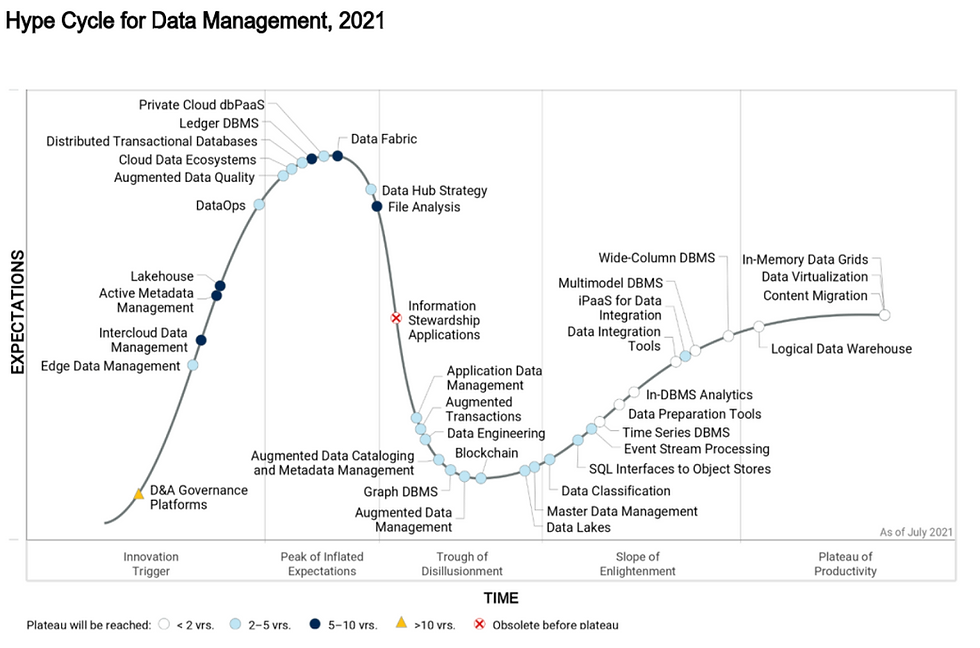The 4th Software Wave is Not on Backorder
- Jeff Gaus

- Oct 19, 2021
- 2 min read
Updated: Sep 24, 2024
Some of you likely remember when you generated a purchase order with an actual piece of paper, a 3-part duplicate - file one in a 3 ring binder, mail or fax the other, and archive the third. This was well before enterprise resource planning (ERP) systems emerged. More of you remember, before eCommerce, when we had to be physically present to buy anything. Investor, author, and Stanford Professor Geoffrey Moore categorized and described these major enterprise software systems.
He defined and described three large software waves driving “impactful growth markets”:
Systems of Record (ERP, CRM, etc.)
Systems of Engagement (MarTech, Sales Enablement, etc.)
Systems of Signals (IOT, mobile, et.)
Building on his body of work, we believe the 4th wave has emerged: systems of evidence.
Each of the preceding waves was enabled by an underlying technology:
Systems of Record emerged because of client-server computing.
Systems of Engagement emerged because of the cloud and email.
Systems of Signals emerged because of mobile communications and Internet of Things (IoT) sensors.
Here is how we, at The Provenance Chain™ Network, see this new category emerging:

The technology supporting this next wave: Blockchain and Distributed Ledger Technology (DLT). Blockchain and distributed ledgers are not new, they are just coming into their own. I’ll explain why in the next paragraph, but it’s not just for cryptocurrency. This chart from Gartner depicts where technologies sit on the Hype Cycle Adoption Curve:

Blockchain is exactly where eCommerce was in 2002; that was “post-sock-puppet" and the $5 Trillion market obliteration of the dot bomb crash; many executives wiped their brow saying: “…thank God that Internet thing is over.” We all know how that played out.
You might ask: “Why is Blockchain/DLT enabling this next evolution?” First, Blockchain/DLT is designed to connect disparate parties; second, the cryptography and immutability provide unprecedented levels of security; third, all consensus algorithms contain the word “proof”, meaning they require evidence for a transaction to be validated and written to the chain or ledger; and fourth, Blockchains/DLTs are often described as being designed for a “trustless” environment, meaning one doesn’t need to know who is on the other side of the transaction; evidence provides the foundation for the necessary trust required to support the transaction.
When the outcome is trust between strangers, we’re onto something BIG.
Commerce is the act of creating and responding to requirements. A consumer requires a clean hotel room or organic cotton or sustainable wine. These requirements set off a whole host of requirements along the supply chain. The levels of requirements and expectations are increasing from all parties: consumers expect to know more about products and companies’ behavior; regulators demand increasing levels of compliance and disclosures; and investors are demanding more transparency on environment, social and governance (ESG) practices. Today, there is no consistent methodology or universal suite of practices for how evidence is provided to engender trust. We believe systems of evidence are emerging to serve this need.
If trust is ultimately the foundation for successful relationships, we need to re-imagine and digitize the foundation for this new era.
Over the next several weeks, we’ll introduce the TRUST Framework to build commercial transparency; this framework can be used for any transparency function and will ultimately change how business operates.




Comments